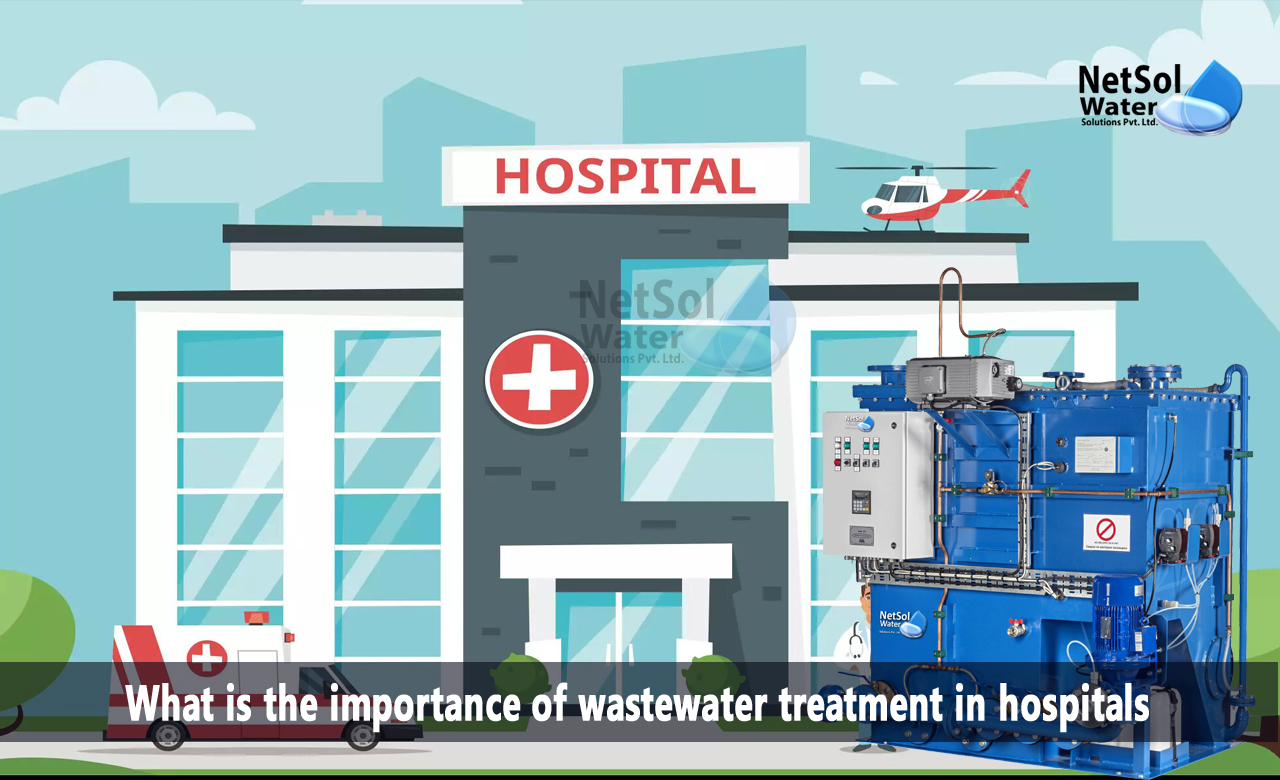What is the importance of wastewater treatment in hospitals?
Hospital wastewater is produced in substantially greater amounts from all of the hospital's departments, including emergency and first aid, operating rooms, drug treatment, intensive care units, chemical and biological laboratories, radiography, canteen and laundry operations, etc.
Since, hospital sewage and wastewater contain a variety of potentially dangerous elements, it poses numerous threats to people's health and the environment, by contaminating surface and groundwater. Thus, hospital wastewater treatment is absolutely necessary.
Let’s understand the importance of wastewater treatment in hospitals!
Germs, radionuclides, chemical reagents, leftover pharmaceuticals, and other harmful substances, are all present in hospital wastewater. Within and between nations, there are differences in the types, quantities, and management techniques of wastewater. As others resemble domestic sewage, some others resemble hazardous waste and should be managed properly.
Before it is directly released into the environment, hospital wastewater treatment facilities' main goal is to treat influent, or untreated wastewater, produced by the healthcare and hospital.
What are the characteristics of hospital wastewater?
Wastewater from hospitals includes:
1. Bacterial and viral pathogens that cause disease;
2. Medicines and their metabolites;
3. Radioactive isotopes;
4. Dangerous substances and heavy metals;
5. Drug leftovers.
Types of techniques for wastewater treatment in hospitals
· Reverse Osmosis
The pressure-driven RO process, which is used to get rid of dissolved solids and small particles, only allows water molecules to flow through it. A suitable amount of pressure must be given to the RO Plant, in order for water to be able to overcome the osmotic pressure.
RO membranes require less maintenance since they have far smaller pores, and can successfully remove all particles, germs, and organics.
· Electrolysis
The disintegration of a material occurs during electrolysis. It often separates the complex into its component elements. You can start a chemical reaction by running an electric current through a substance, or combination of elements, often in liquid form. Therefore, the movement of electrons or ions is electricity.
· Aeration
Aeration air is forced into the aeration tank or basin to encourage the conversion of NH3 to NO3, and to provide oxygen for bacteria to continue to reproduce and thrive.
The bacteria strip/remove the oxygen molecules after the nitrate molecules have been converted to NO3, releasing the nitrogen (N) as N2 (nitrogen gas).
By fostering and speeding the natural activity of microbes, wastewater treatment primarily aims to break down organic material. It all begins in the aeration tank. Thus, the primary function of the aeration tank is to introduce oxygen into the tank, in order to encourage the decomposition of any organic matter and the development of bacteria, and to give the process enough time.
The tank can be aerated by either rapid agitation that aerates the water, or by pumping and distributing air into it. During this phase, the ideal conditions are produced to encourage bacterial growth.
Conclusion
The dangerous elements in the wastewater pose a risk to both human health and the environment, if the water is not cleaned properly. Therefore, wastewater treatment facilities are always required in hospitals, to minimize negative environmental effects.
Hospitals may benefit from a tailored solution by working with a water technology expert, like Netsol Water Solutions’ that includes guidance, wastewater treatment system design, installation, testing, and maintenance to ensure a steady supply of compliant, purified water.
To discuss your needs, contact us at 9650608473, or send an email to enquiry@netsolwater.com with your inquiry.



